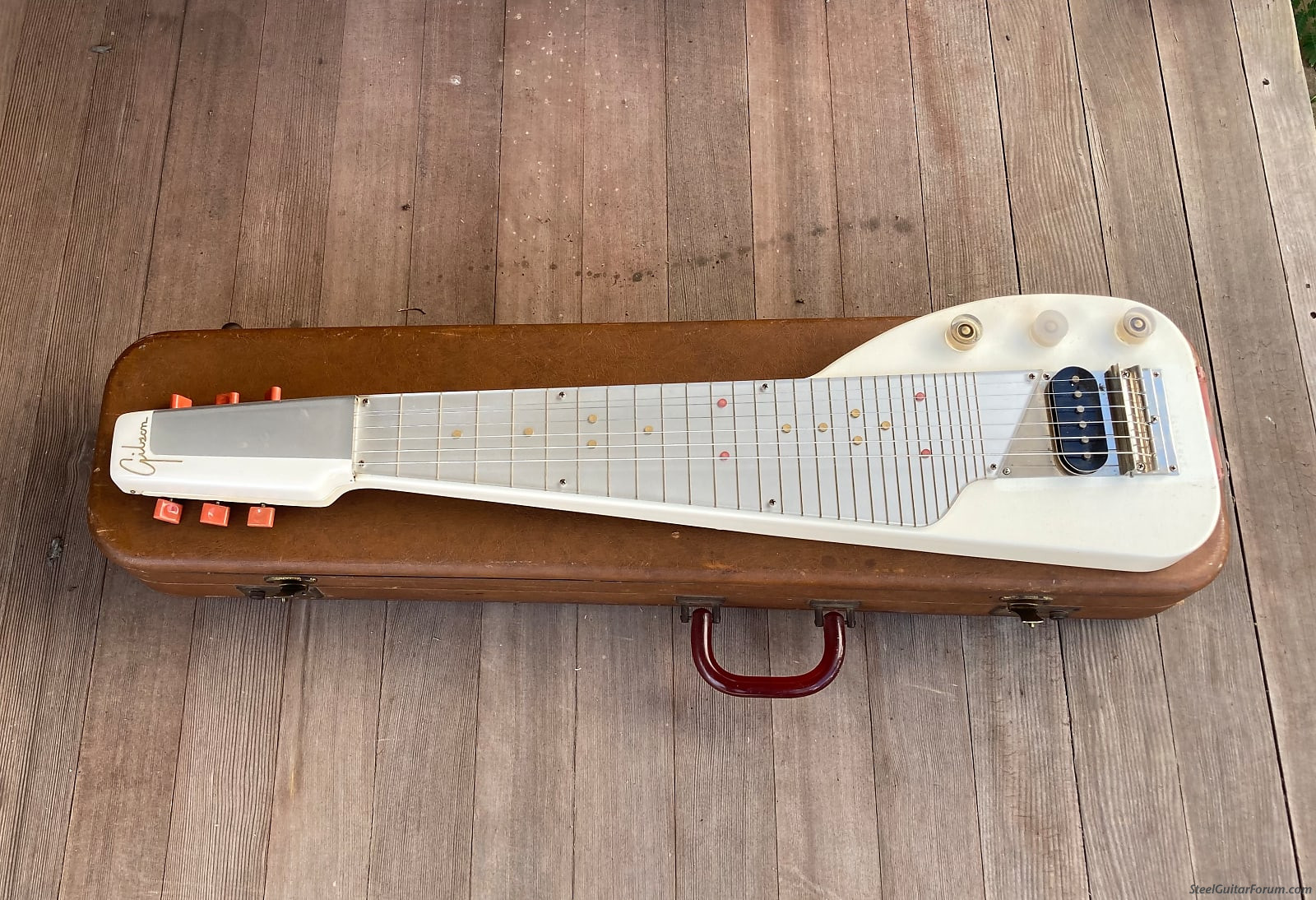Kip, I have four of the white Ultratones, and only one has its original electronics intact. Even though the controls are a little hincky, it sounds superb, so I haven't done a thing besides fabricate a new mounting plate for the output jack. This one is tuned to standard C6.
One is a 7-string that somewhere along the line had been butchered by a previous owner with inexplicable mods too numerous to list here. I took the liberty of doing a radical rebuild, with two custom Stringmaster-style 7-string pickups, and standard Stringmaster wiring with volume, tone, and blend pots. I set this one up for A6 -- high E and low A.
The third one was similar to what you describe, with corroded wiring, and pots that performed poorly if at all, but a good pickup. I replaced the pots, caps, and jack, and wired it to the specs in Steve Ahola's Century wiring diagram. It also had the issue you describe with the high pickup/low bridge. I raised the bridge by adding successive layers of StewMac aluminum shielding material under the bridge to achieve the proper height. I'm generally a C6 player, so I set this one up with the same intervals tuned down to G6. It's a real growler.
Number four is undergoing a complete overhaul as I type. I got it pretty cheap, as it was a mess. The paint would flake off just from looking at it, somebody at some point apparently spilled a (rum and?) coke in it; the pickup was shorted, the mounting plate was corroded, and the controls were frozen. I had Sentell's in Sacramento rewind the pickup, I found a plating shop to re-chrome the mounting plate, and I've finished the color coats, and plan to install an aftermarket decal on the headstock today. I hope to begin spraying clear coats this afternoon or tomorrow -- weather permitting. Someday I hope to obtain a good original fretboard.
https://bb.steelguitarforum.com/viewtopic.php?t=372490
All of the first generation Ultratones were white to the best of my knowledge. I've seen photos of a gold sparkle UT that was supposedly a prototype. Most if not all have yellowed to varying degrees over the course of seventy-some years. No two of my four are/were exactly the same tone of white. Gibson's postwar lap steels are notorious for losing their finish. Obviously, the factory did not pay the same attention to detail with the finish work of their lap steels as they did on their archtops and flattops.
The Klusons with the rectangular pinkish buttons have held up through the years reasonably well, the exact opposite can be said for the identical tuners with the white plastic buttons.
My favorites are the two that are occupying my Deluxe34 double stand at any given moment. But if I had to choose only two to keep, I would have a hard time parting with the black Century-6 with original electronics, and the rescue '58 Ultratone -- even though I'm not crazy about its narrow string spacing, the thing sounds fabulous. My beat-up Century Deluxe with the stoptail deserves an honorable mention. Sounds great, plays great, and sustain a-go-go.
Some observations:
* The white Ultratones and black Century's are virtually identical with the exceptions of the fragile Plexiglas covers and their body paint. They sound more alike than different.
* The cream-topped, mahogany-bodied Ultratones sound different than the blue, maple-bodied Centurys.
* The blue Centurys sound different than the blue Century Deluxes, which feature the stop-tail wraparound bridge.
* The '57 - '59 humbucker-equipped Ultratones sound different than all the rest. And they play differently too, because the PAF pickup's poles are spaced tighter than both the lap steel version P-90s, and the original wide-oval/racetrack pickups (arguably my favorites) -- which in turn required a new bridge with much tighter string spacing.
I've never played a brown Ultratone, a pink Century, or a red, mahogany Century from the mid-sixties.










